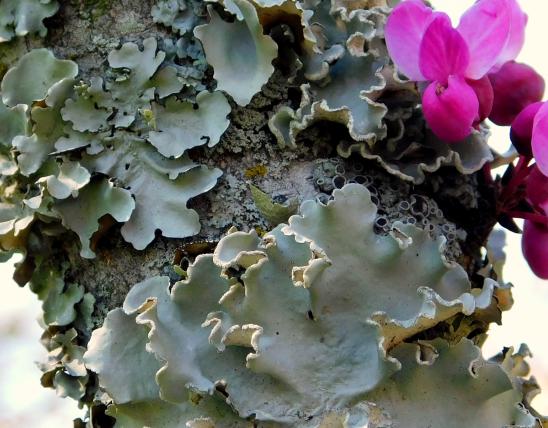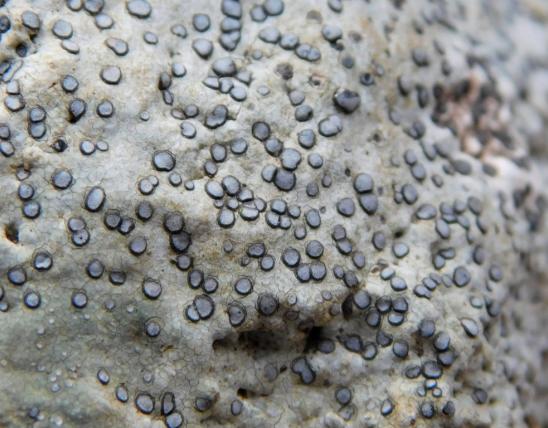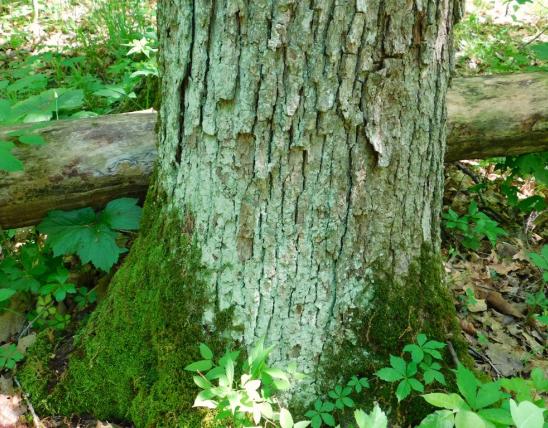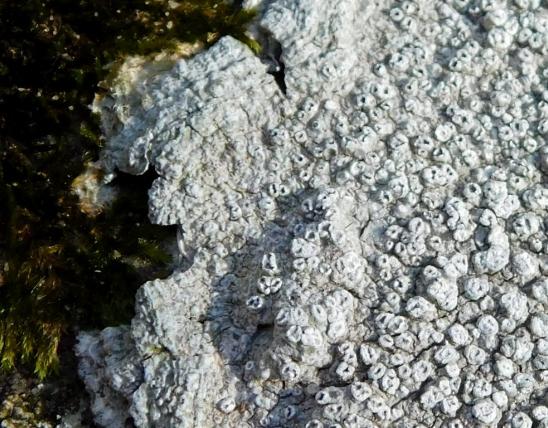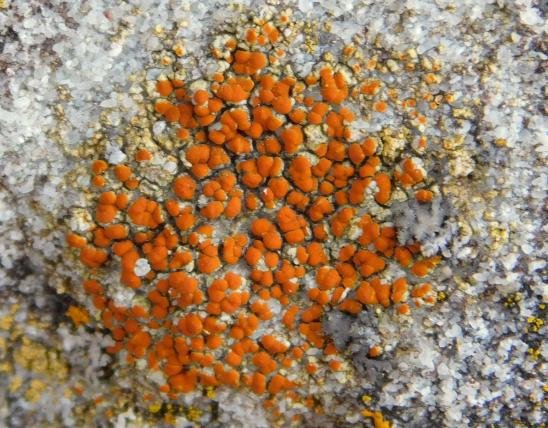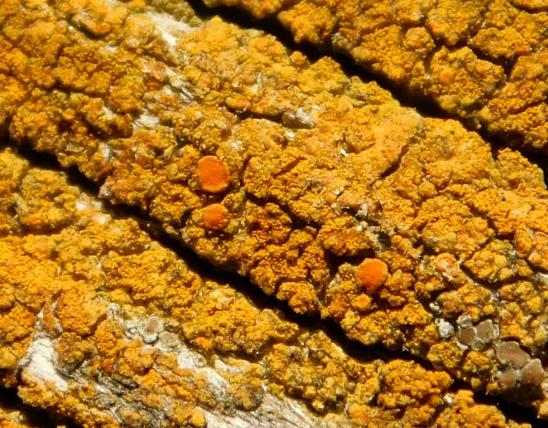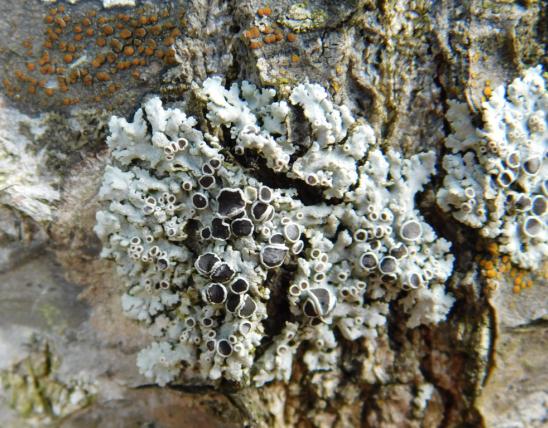
Rim lichens have mostly disk-shaped or button-shaped apothecia (spore-bearing structures) encircled by noticeable rims that are the same color as the thallus (rest of the lichen body). The centers of the apothecia may be orangish, brown, or another color, making them noticeable against the paler, gray, tan, or greenish thallus. There are more than 150 species in this genus in North America, and about 16 are found in Missouri.
Like other crustose lichens, rim lichens are tightly attached to the substrate they grow on. They often look like a patch of old, cracked, weathered paint. Where two crustose lichens grow against each other, they often develop a blackish line along their edges.
A lichen is an organism that results when a fungus species and an algae species join together. Although the relationship between the fungi and algae is quite intimate and integrated, the lichen that is formed does not much resemble either of the components. Learn more about lichens on their group page.
Similar species: Of Missouri’s approximately 436 species of lichens, about 200 of them are ones with a more or less crustose growth form. Members of the large Lecanora genus are difficult to tell apart. Making things more confusing, there are other genera, too, that have similar “lecanorine” cup rims. (Any lichen with such apothecia can be described as a “lecanorine” lichen, thanks to this well-known genus.) In many cases, only devoted specialists, using chemical tests and microscopes, attempt species identifications in these confusingly similar, large groups.
Lichens begin as tiny spots but may grow to cover several square inches. Groups may coalesce to cover large areas.
Statewide.
Habitat and Conservation
Different species have different preferred habitats. Members of this group of lichens are often seen growing on trees or rocks.
In Missouri, some notable rock-dwelling rim lichens include L. muralis (syn. Protoparmeliopsis muralis), which is characteristic on moist limestone or dolomite cliff edges, and L. valesiaca, which is characteristic on dry limestone or dolomite cliff faces.
Status
The taxonomy of rim lichens and related genera is complicated and still being worked out. Many species have a list of synonymous scientific names that have been used in the past.
Human Connections
What a large and confusing collection of crusty lichens! But pat yourself on the back if you can start noticing the distinctive apothecia, whose rims are similar in color and texture to the rest of the lichen body. If you see these apothecia and think “rim lichen” or “lecanora,” good job!

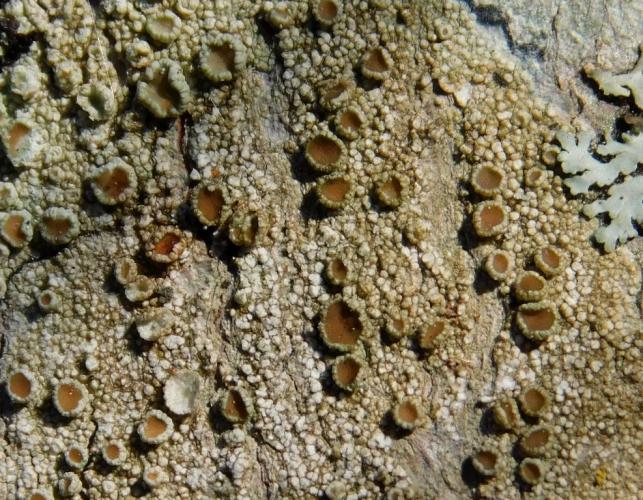
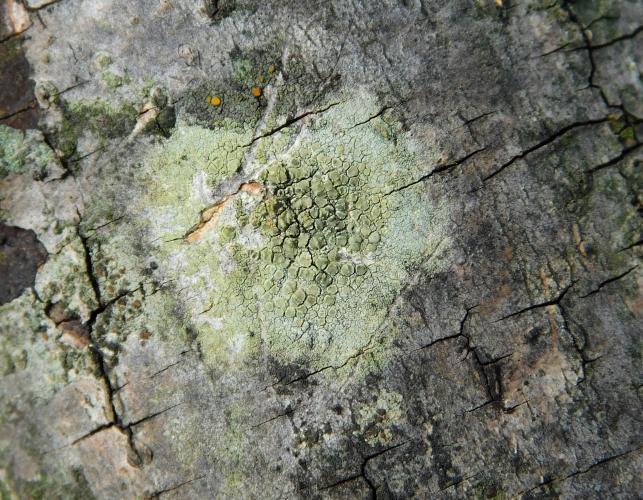
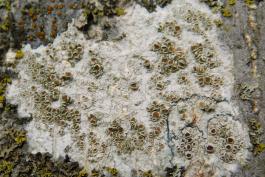

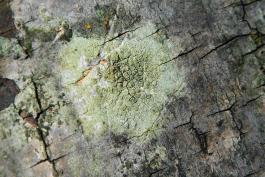
Mosses, liverworts, hornworts, and lichens seem rather similar, but these organisms are in very different groups. Mosses, liverworts, and hornworts are small, low plants usually found in damp habitats. Unlike more familiar plants, they lack veinlike structures and do not produce flowers or seeds — instead, they produce spores. Meanwhile, lichens are not plants at all: they are a collection of different fungi that have photosynthetic algae living within their tissues.






















